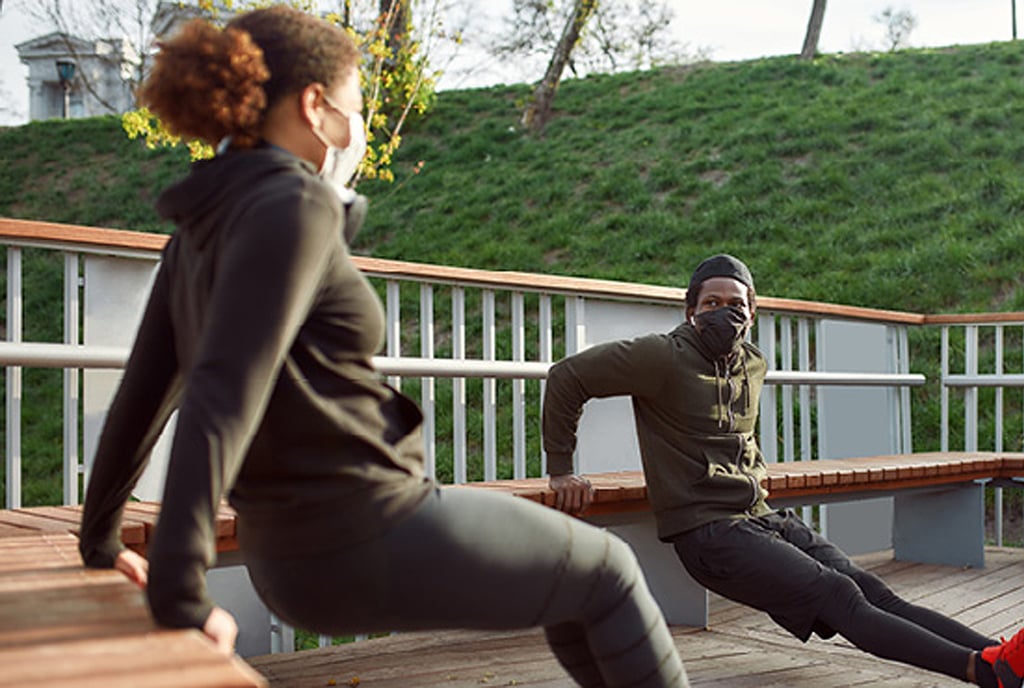The right mask to wear while exercising

It is important to look for a mask that fits well to avoid it being a distraction while working out. Photo / dreamstime.com
What you need to know:
- Wearing a mask is one way to slow the spread of infectious diseases, including Covid-19. Yet many people see a mask as a potential barrier when attempting to exercise, particularly when away from home. Here are some tips on wearing a mask while exercising.
In order to curb the spread of Covid-19, the need to wear a mask is not waning.
Even as the world eases up owing to vaccination, many health experts continually advocate for its use, even when exercising.
The explanation is simple, gyms and fitness centres are public places and with the heavy perspiration, chances of spreading bacteria are high.
However, Brian Kasasa, a sports scientist, says exercising while wearing a mask may make the workout more laborious since lots of oxygen is needed yet that is hampered by the presence of the mask.
As such, these can only be worn by persons without cardiovascular illnesses such as asthma since, according to Dr Stephen Ataro Ayella, a physician member of the Canadian Academy of Sports and Exercise Medicine, these suffer reduced lung function and the face mask will only exacerbate breathing difficulty and cause fatigue.
Apart from being healthy, to ensure that you have a rewarding workout, here are the qualities of the mask you must use:
Breathable material
Dickson Aruhomukama, a clinical microbiology researcher at Makerere University College of Health Science, says the material must be adjusted in several ways to allow ample air supply. “A surgical mask is best since it has two layers with efficient filters that will allow one to take in as much filtered air yet be able to breathe out easily. This way, one is protected without suffering air reduction,” he shares.
However, if you must make your own mask, consider the material used and in this case, a cotton cloth or a kitengi of breathable material.
Moisture-wicking material
In line with the material used to make the mask, Veron Bikamata, a strength, performance and rehabilitation coach, says persons exercising ought to prioritise face masks with moisture-wicking material such as polyester, nylon, and silk. These materials, he adds, keep the mask from being drenched in sweat,” he shares.
Layers
Aruhomukama adds that while the mask used by one exercising ought to be somehow free seeing that one needs as much air as possible, one layer is not good enough. He adds that the mask should have no less than two layers for optimal protection.
Comfortable
When working out, comfort is important. Aruhomukama says rather than have one strap on your mask, go for one that has two so that it does not fall off as you work out.
“Ensure that your mask has got two strings where one ties above the ears and the other below the ears to avoid creating opportunistic air pockets,” he advises.
Well-fitting
Bikamata says the mask must mould well to your face, thus minimising the need to continually adjust it. This also limits wearing a mask that is too tight hence hamper breathing.
“It should make good contact with the nose and mouth not forgetting the sides. In that case, air pockets are avoided thus rendering maximum protection,” he shares.
Aruhomukama adds that it good to have the mask sitting on the bridge of the nose rather than sit on the nose as that could cause the mask to slump due to sweating.
Duration of use
While one who is not engaged in strenuous activity such as working out should not use a mask for more than six to eight hours, one who is exercising should lower that duration.
“If you are jogging, it is important to incorporate rest time within your workout, say 20 minutes, to remove the mask and rest. This will allow the lungs to get more air before wearing the mask again, Aruhomukama advises.
Bikamata, however, advises those wearing a mask while exercising to work out from open spaces as working out indoors means reducing the already restricted air supply.
However, Aruhomukama says it is not right to restrict the discourse to the use of masks as other Covid-19 prevention measures such as social distancing can be used. “For persons who cannot workout with a mask, such measures will come in handy,” he says.
The researcher adds that in healthy people, short-term to moderate to strenuous aerobic physical activity with the appropriate make of mask is feasible, safe, and can only be associated with minor changes in physiological factors, particularly a mild increase in the amount of carbon dioxide exhaled.
If you start to feel any of these symptoms while exercising, stop and take a break until they subside:
● Overall discomfort.
● Fatigue.
● Dizziness.
● Headache.
● Significant shortness of breath.
● Muscular weakness.
● Drowsiness.
If your symptoms continue or worsen, stop the activity. In serious cases, seek medical help.





